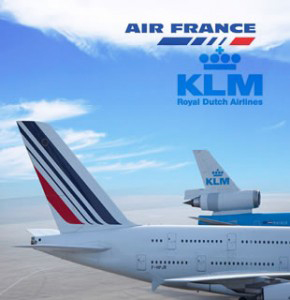FORTALEZA, Brazil, May 4 (AFP): Air France-KLM's inauguration Thursday of a flight to a little developed corner of Brazil highlights European airlines' attempt to bring the continents together, catching up with far more dominant routes between South and North America.
Latin America is a fast-expanding destination, seeing 9.3 per cent growth in air travel last year, its biggest increase since 2011, the International Air Transport Association (IATA) said. That's ahead of the global increase last year of 7.6 per cent, taking worldwide passenger numbers to four billion.
 ForwardKeys consultancy predicts another nine per cent increase in international flights out of Latin America and the Caribbean in the first half of this year.
ForwardKeys consultancy predicts another nine per cent increase in international flights out of Latin America and the Caribbean in the first half of this year.
Much of that will be thanks to Brazil, ForwardKeys says, which is predicted to see a 14.2 per cent rise in international departures and 16.5 per cent increase in international arrivals.
Brazil is slowly emerging from a deep recession and will soon sign an "open skies" accord, which will facilitate growth in traffic with the United States.
"The trend in flight bookings both to and from Latin America is incredibly healthy," said Olivier Jager, president of ForwardKeys. "Many airlines are increasing capacity."
But Europe is still on the margins, with five times more traffic going from Latin America to North America than trans-Atlantic.
Eighty one per cent of international traffic in Latin America goes to North America. According to 2016 figures from the regional airlines group ALTA, there were 16.3 million passengers to North America and only 3.28 million to Europe.
But that trend is shifting, with 14 per cent growth in trans-Atlantic flights in 2016. And Air France-KLM's new flight between Paris and Brazil's north-eastern seaside city of Fortaleza hopes to catch the turning tide.
"Latin America is a very interesting market for European companies," said Carlos Osores, who heads the aviation consultancy ICF.
Unlike the mature North American market, "there are opportunities for higher profits, as there are in Africa, because there isn't yet much competition in the low cost sector."
A big target is Brazil, "which has huge potential but only saw six million international tourists in 2016, the same number as in the little Dominican Republic," Osores said.
European companies TAP, with Azul, Iberia, Air France-KLM, Air Europa, Turkish Airlines and the low cost Norwegian and Level have all raised their capacities by 10 to 40 per cent on the route over the last year.
But if European carriers have opened three new routes in the last 12 months, including to Recife in northeast Brazil, there have been three times that many launched between Latin America and the United States, such as Fort Lauderdale and the Amazon city of Belem.
The shorter distances to the United States mean smaller planes and lower risks.
Osores said Europe is also held back by higher tariffs "due to a lack of competition. Often the big routes are operated by only one or two carriers."
European companies are looking to develop by following the US lead on focusing on secondary routes.
For example, Air France-KLM's new route isn't meant so much to bring tourists to Fortaleza as to link them to GOL's network throughout Brazil's north-east, an area full of tourist potential.
It also avoids reliance on the already heavily burdened infrastructure at Sao Paulo's airport or similarly busy hubs in South America like Bogota, Lima or Santiago.
"Fortaleza's geography is ideal. It's a much quicker entry point to Brazil and much closer to Europe," Air France commercial chief Patrick Alexandre told AFP. "From next winter we'll have 44 flights a week."